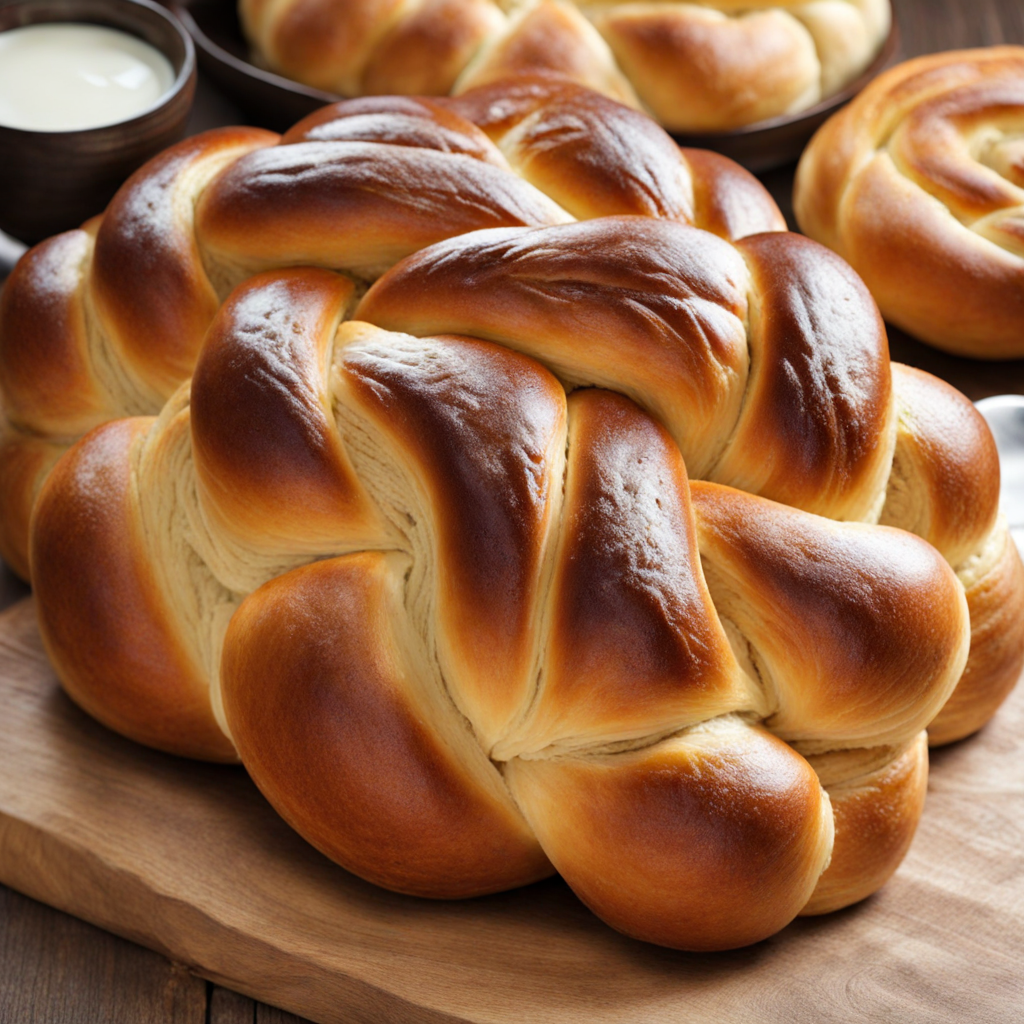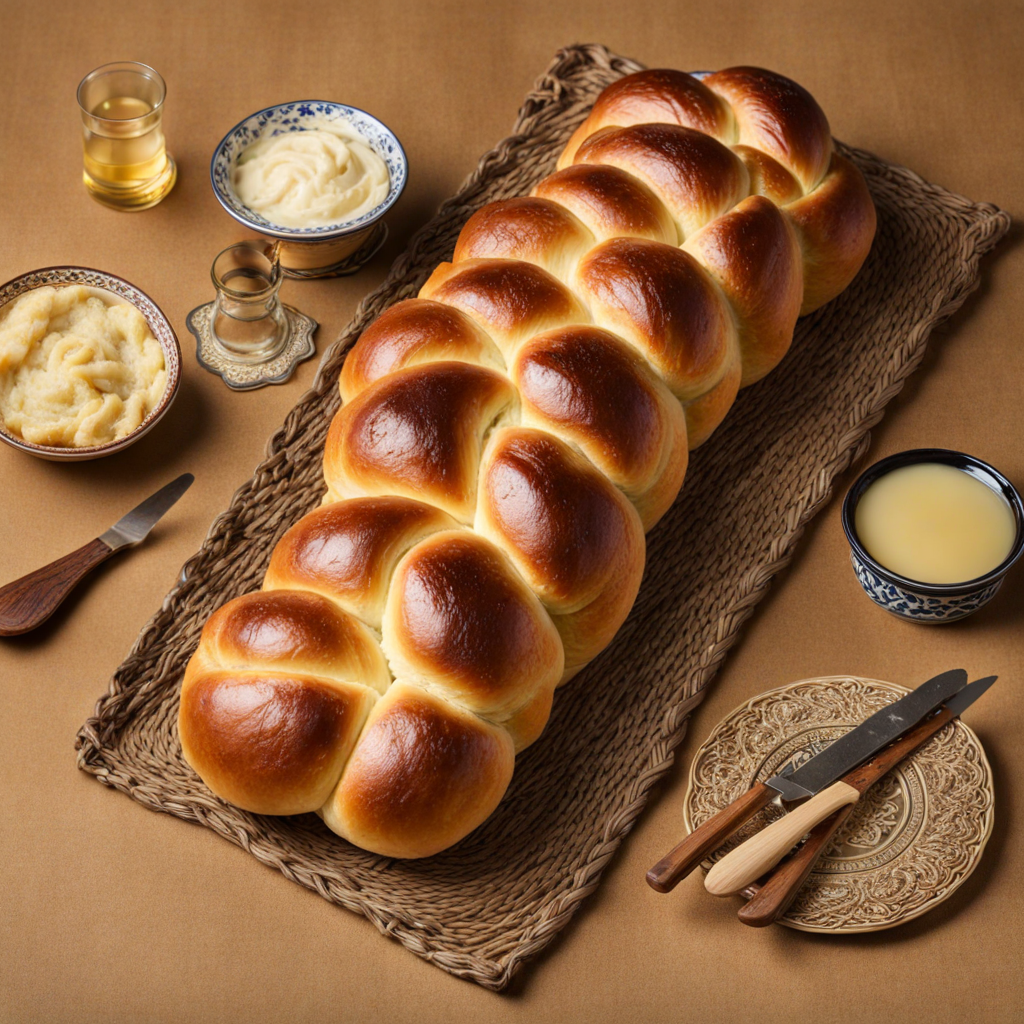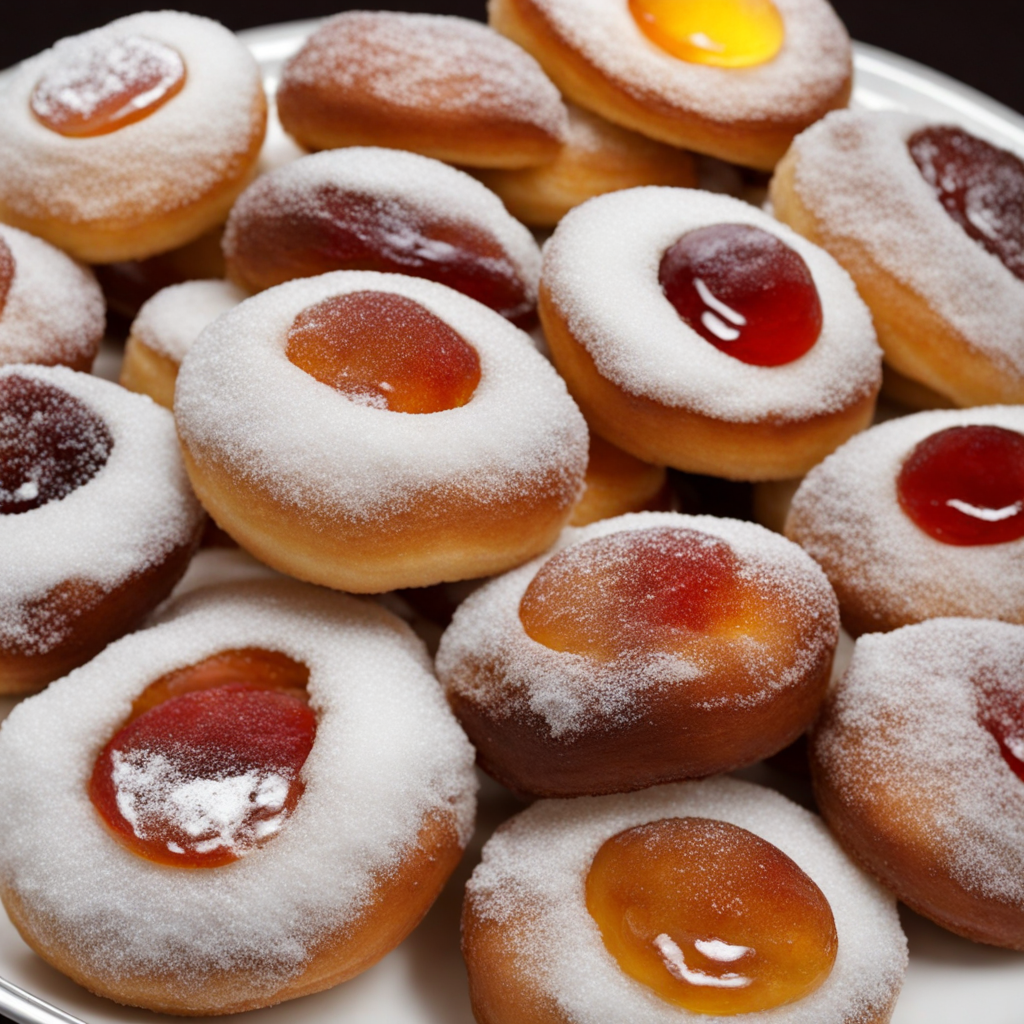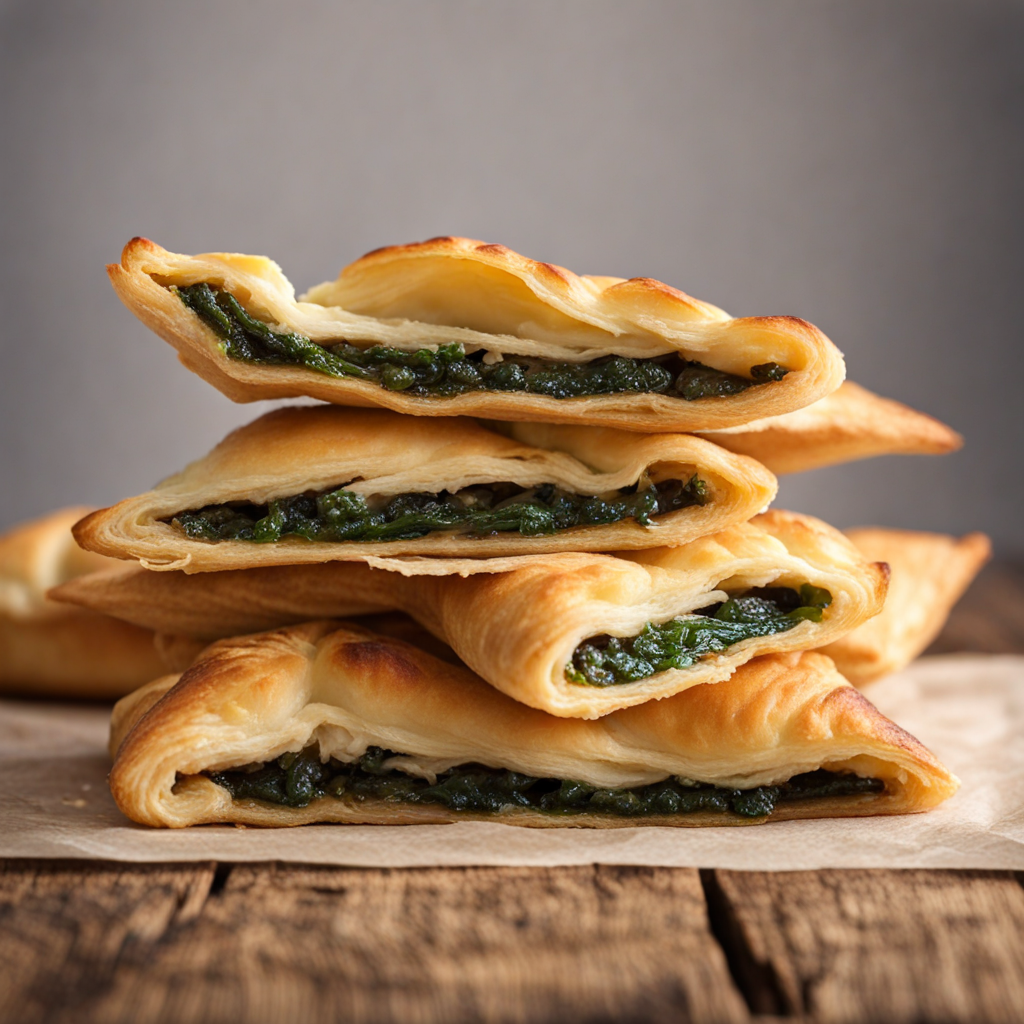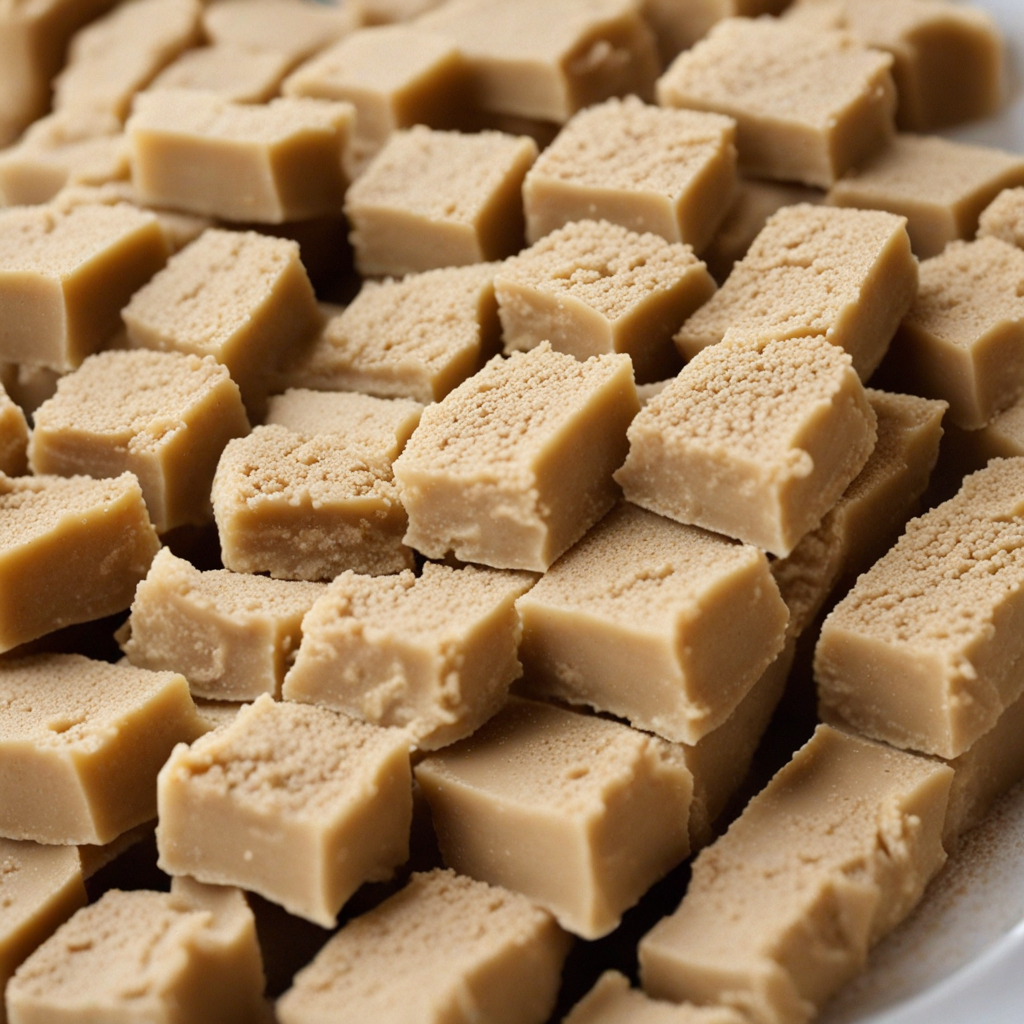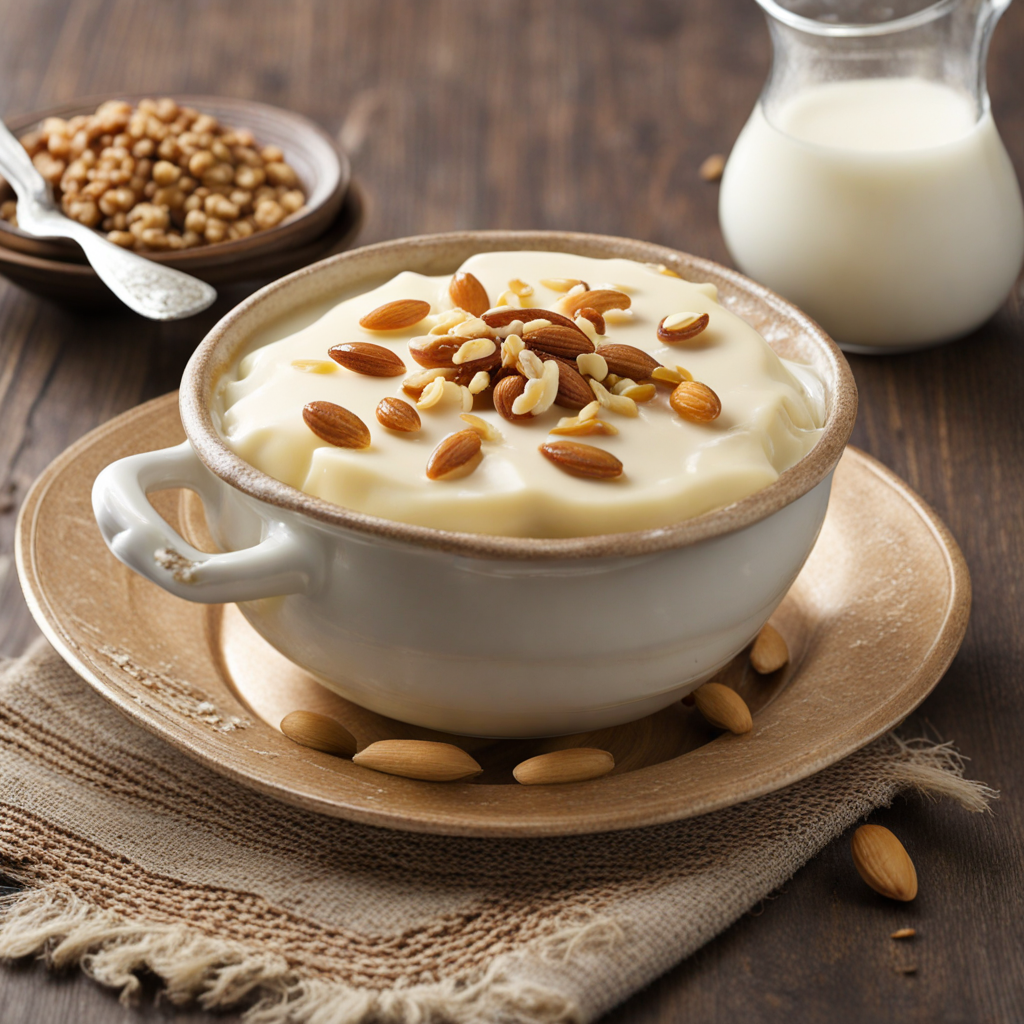Challah
Challah is a rich, slightly sweet bread that originates from Jewish traditions, particularly prevalent in Israel. This braided loaf is a staple at Shabbat and holiday meals, often enjoyed with wine and various dishes. Its texture is soft and fluffy, with a golden-brown crust that has a delightful sheen, usually achieved by brushing the dough with egg wash before baking. The dough itself is made from simple ingredients including flour, water, yeast, eggs, and sugar, but the method of preparation and the careful braiding technique elevate it to a special culinary experience. The flavor profile of Challah is subtly sweet, thanks to the sugar and eggs, which also contribute to its rich golden color. Each bite is a perfect balance of softness and structure, making it ideal for tearing apart and sharing. It can be enjoyed plain, or it can be transformed into a variety of dishes, such as French toast or bread pudding, showcasing its versatility. The aroma that wafts through the kitchen while it bakes is nothing short of enchanting, inviting everyone to gather around the table. Challah holds a cultural significance that goes beyond its taste; it embodies tradition and community. The act of braiding the dough is often a family affair, with generations passing down recipes and techniques, making it a cherished part of Jewish heritage. In Israel, you’ll find Challah in bakeries and homes alike, symbolizing unity and celebration. Whether you're experiencing it during a festive meal or savoring a slice with butter, Challah offers a unique taste of tradition that is both comforting and delicious.
How It Became This Dish
Origins of Challah Challah, the traditional Jewish bread, has its roots in ancient customs and rituals. The word "challah" itself refers to the portion of dough that is separated and set aside as an offering before baking. This practice originates from biblical times, where it was customary to give a portion of the dough to the priests in the Temple. The dough was made from wheat, which was a staple crop in ancient Israel and a symbol of sustenance and life. The earliest references to bread in Jewish texts can be traced back to the Torah, where the importance of bread as a staple food is emphasized. During the time of the Second Temple in Jerusalem, challah was often made with a rich, sweet dough intended for festive occasions. As the Jewish people migrated and settled in different regions, they adapted their bread-making techniques, incorporating local ingredients and customs, leading to the development of various regional styles of challah. Cultural Significance In Jewish culture, challah has significant ritualistic importance, particularly during the Sabbath and holidays. It is customary to cover the challah with a cloth before the blessing is recited, symbolizing the sanctity of the bread. The act of blessing and breaking the challah is known as “hamotzi,” and it is a central part of the Sabbath meal, representing the sharing of sustenance and community. Challah also plays a vital role in Jewish life-cycle events such as weddings and bar and bat mitzvahs. At weddings, two loaves of challah are often placed on the table, symbolizing the union of two families. The braided form of challah is believed to represent the intertwining lives of the couple. Similarly, during the bar and bat mitzvah celebrations, challah is served as a symbol of the transition into adulthood and responsibility within the Jewish community. Development Over Time As Jewish communities spread across Europe, North Africa, and the Middle East, they brought their culinary traditions with them, leading to the evolution of challah recipes and styles. In Ashkenazi Jewish culture, which emerged in Eastern Europe, challah became a soft, enriched bread, often made with eggs, sugar, and butter, yielding a slightly sweet flavor and a tender crumb. The iconic braided shape of the loaf, usually made with three or six strands, became a defining characteristic of Ashkenazi challah. In contrast, Sephardic Jewish traditions, prevalent in Spain, Portugal, and North Africa, produced a different style of challah. Here, it was common to use olive oil instead of butter, which lent a distinct flavor and texture to the bread. Sephardic challah is often flavored with spices such as cinnamon and anise, reflecting the culinary influences of the Mediterranean region. The diversity of these traditions showcases the adaptability of challah, as it evolved to suit various cultural contexts while retaining its core significance. Challah in Modern Israel In contemporary Israel, challah holds a special place in the hearts and homes of Jewish families. It is an integral part of the Friday night Shabbat dinner, where families gather to welcome the Sabbath. Many Israeli bakeries offer a variety of challah types, including whole wheat, gluten-free, and even chocolate-studded versions, reflecting modern dietary preferences and innovations in baking. The Hebrew term "challah" has also gained popularity beyond the Jewish community, with many non-Jewish Israelis enjoying this delicious bread as part of their culinary repertoire. It is commonly served with dips, alongside meals, or simply enjoyed fresh out of the oven. The emergence of artisanal bakeries in Israel has further elevated challah, with bakers experimenting with flavors, textures, and shapes to create unique interpretations of this traditional bread. Moreover, the cultural significance of challah has extended into popular culture. It is not uncommon to see challah featured in Israeli art, literature, and even social media. The act of baking challah has become a form of communal bonding, with many families and friends gathering to create their own loaves, passing down recipes and traditions through generations. Challah and Globalization As globalization continues to influence culinary practices, challah has transcended cultural boundaries and has found its way into international cuisine. In many cities around the world, Jewish bakeries and restaurants have introduced challah to diverse audiences, resulting in various adaptations and fusions. For instance, the rise of "challah French toast" has become popular in brunch menus, showcasing the bread's versatility beyond its traditional uses. Social media platforms have also played a significant role in popularizing challah, with numerous recipes and baking tutorials shared widely. Food bloggers and influencers regularly showcase their creative takes on challah, experimenting with flavors such as matcha, pumpkin spice, and even savory versions with herbs and cheeses. This newfound creativity has not only revitalized interest in challah but has also contributed to a sense of community among bakers and food enthusiasts globally. Furthermore, the practice of "challah baking parties" has gained traction, where groups come together to learn, bake, and share their experiences. This trend fosters a sense of connection and belonging, reinforcing the idea that food, particularly bread, brings people together, transcending cultural and geographical divides. Conclusion The history of challah is a rich tapestry woven with tradition, cultural significance, and culinary evolution. From its ancient origins and its role in rituals to its modern adaptations and global appeal, challah remains a cherished symbol of Jewish identity and community. As it continues to evolve, challah serves as a reminder of the power of food to connect people, celebrate heritage, and create lasting memories. Whether enjoyed fresh from the oven or as part of a festive meal, challah embodies the essence of togetherness, making it a beloved staple in both Jewish and broader culinary traditions.
You may like
Discover local flavors from Israel


